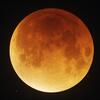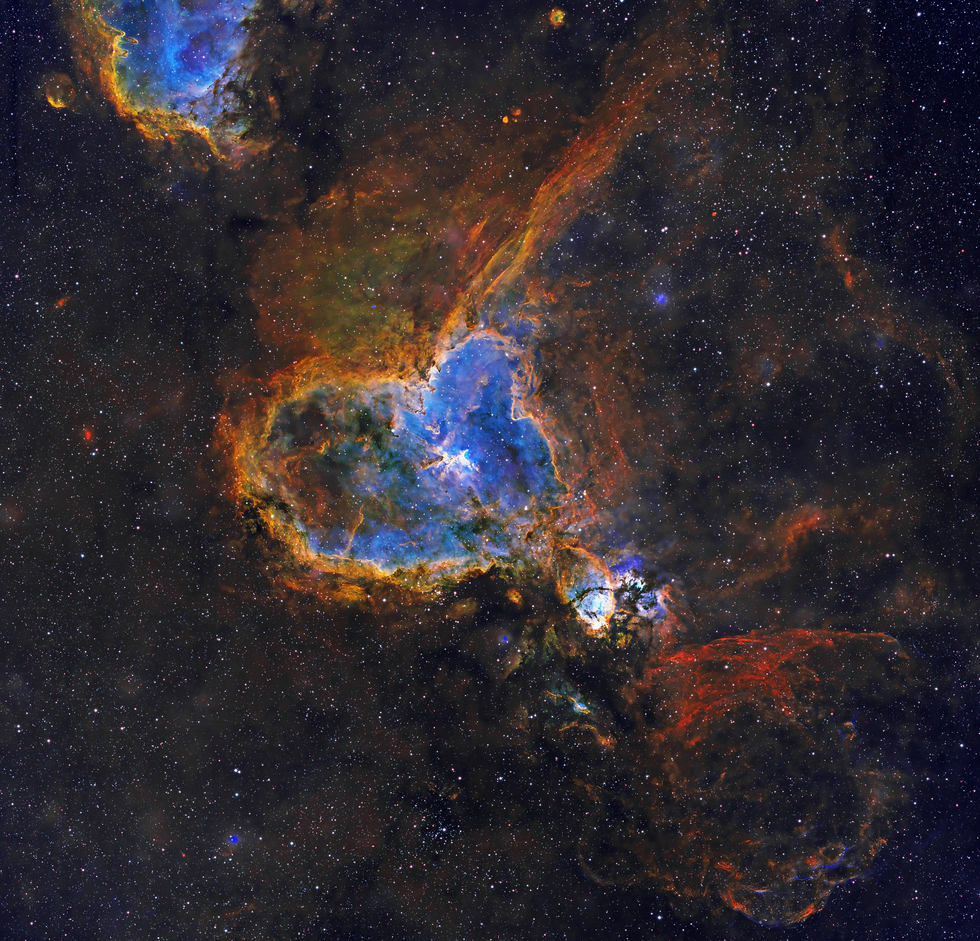IC1805 the Heart Nebula
IC1805 the Heart Nebula
The Heart Nebula (also known as the Running Dog Nebula, Sharpless 2-190) is an emission nebula, 7,500 light-years (2,300 pc) away from Earth and located in the Perseus Arm of the Galaxy in the constellation Cassiopeia. It was discovered by William Herschel on 3 November 1787.[1] It displays glowing ionized hydrogen gas and darker dust lanes.
The brightest part of the nebula (a knot at its western edge) is separately classified as NGC 896, because it was the first part of the nebula to be discovered. The nebula's intense red output and its morphology are driven by the radiation emanating from a small group of hot stars near the nebula's center. This open cluster of stars, known as Collinder 26, Melotte 15, or IC 1805, contains a few bright stars nearly 50 times the mass of the Sun, and many more dim stars that are only a fraction of the Solar mass.
The Heart Nebula is also made up of ionised oxygen and sulfur gasses, which are responsible for the rich blue and orange colours seen in narrowband images. The nebula also spans almost 2 degrees in the sky, covering an area four times that of the diameter of the full moon. -desc Wikipedia
The brightest part of the nebula (a knot at its western edge) is separately classified as NGC 896, because it was the first part of the nebula to be discovered. The nebula's intense red output and its morphology are driven by the radiation emanating from a small group of hot stars near the nebula's center. This open cluster of stars, known as Collinder 26, Melotte 15, or IC 1805, contains a few bright stars nearly 50 times the mass of the Sun, and many more dim stars that are only a fraction of the Solar mass.
The Heart Nebula is also made up of ionised oxygen and sulfur gasses, which are responsible for the rich blue and orange colours seen in narrowband images. The nebula also spans almost 2 degrees in the sky, covering an area four times that of the diameter of the full moon. -desc Wikipedia
SPECIFICATIONS
Telescope
Takahashi FSQ-106ED
Camera
FLI PL16803 4096 x 4096
Location
IC Astronomy Oria, Almería, Spain
Date of observation
Various Day/Month throughout 2020/2021/2022
Filters
Astrodon, Halpha, SII, OIII
Processing
Photoshop Pixinsight
Credits
Data - Telescope.live Processing - Jbuonomo



